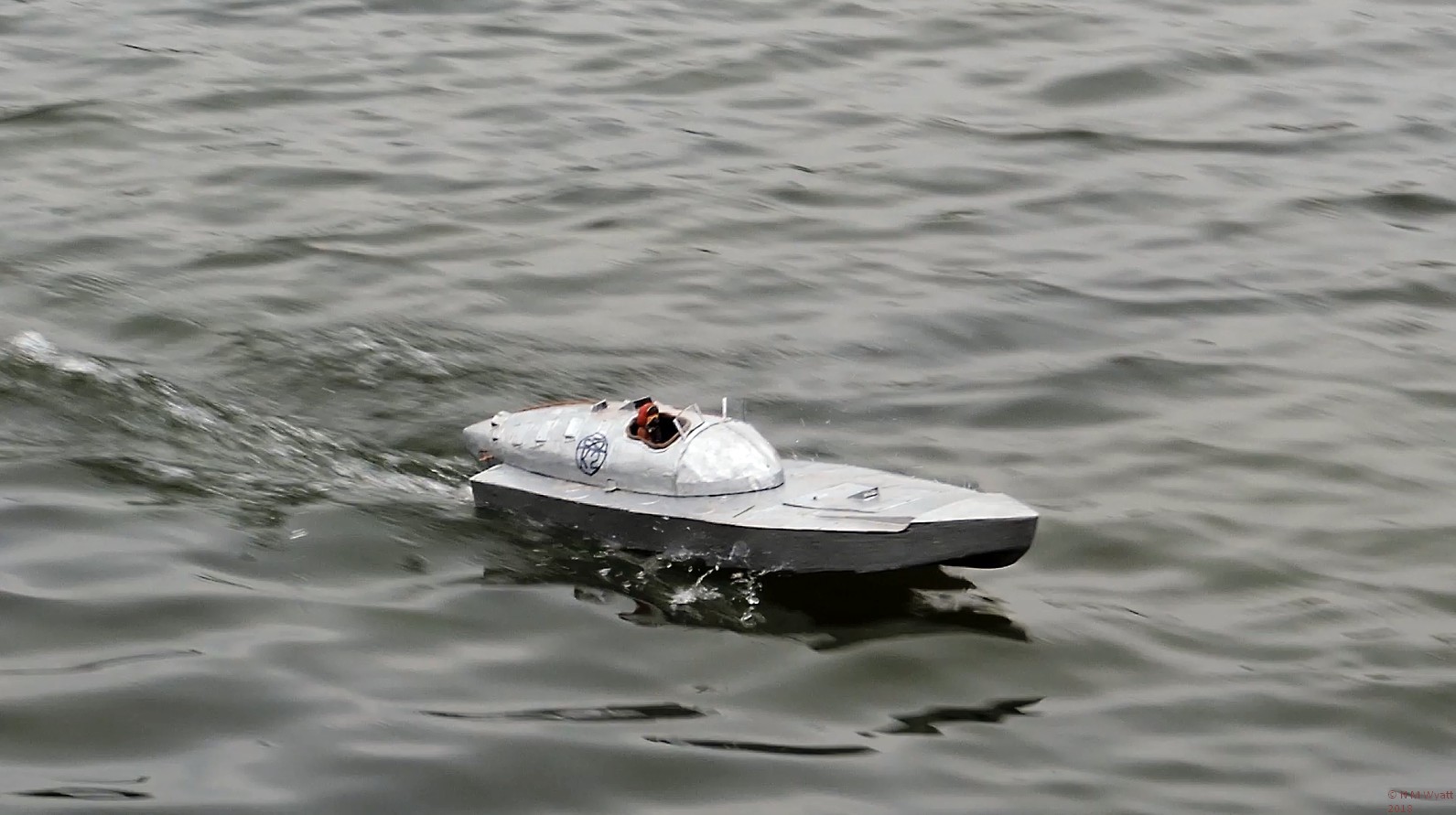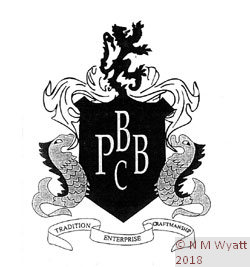Miss Britain III was a speedboat designed by Hubert Scott Paine and built by his company British Power Boats. Inspired by the success of the Supermarine S6B in the 1931 Schneider Trophy, he had tried to obtain a Rolls Royce type R engine to power a boat to challenge the American speedboat racer, Gar Wood for the Harmsworth Trophy. Wood's massive speedboat America X had four engines and nearly 8,000 horsepower.
Miss Britain III shows off her paces
Miss Britain III ticking over at modest speed.
By 1933, Scott-Paine and British Power Boats had gained experience with Napier engines, and he obtained a Napier Lion of 1,350 horsepower, little more than half that of even the Rolls Royce R. BPB built Miss Britain III at Hythe, incredibly light it was built with an aluminium-skin over a wooden frame. The cockpit was doped canvas over wood, Scott-Paine's genius for design was expressed as an incredibly futuristic multi-step hydroplane - it would not have looked out of place in a Flash Gordon episode! Despite its small size the speedboat was still stable and manageable at great speed.
The British Power Boats' logo
The Harmsworth Trophy
Dwarfed by Gar Wood's monster speedboat, when they competed in September 1933 wood scarped a victory at almost 87 mph, less than 1 1/2 mph ahead of Scott-Paine. Portrayed as a David versus Goliath contest, Paine was lauded as a hero, despite his failure to win.
The full size Miss Britain III
Record Breaking
Miss Britain III went on to real success, however, and in November 1933 Scott Paine and Gordon Thomas became the first people to exceed 100mph in a single engined speedboat, a record that stood until the 1980s. The following year Scott-Paine raised the speed record to over 110 mph.
In 1951 Hubert Scott-Paine donated Miss Britain III to the National Maritime Museum, but it is now on display in the Science Museum in London.
My Model
I don't claim my model is a fine-scale one, it is built to a plan given away with Model Boats magazine and powered by a small brushless DC motor from a 9.6 volt NiHM pack. The model is beautifully controllable, accelerating rapidly up on to the plane and showing excellent stability. The multi-step hull has a very flat attitude at speed, which is greatly in contrast to deep-vee monohull designs. It has no ghastly rooster-tail, and has a very scale appearance to its wake. I had a few speed controller problems and I suspect that when the new controller is fitted it may be somewhat faster.

The model Miss Britain II re-enacts the prototype's successful world record attempt!
The model has a balsa wood frame and is skinned in 0.7mm plywood, so it is very light. The canvas cockpit cover is doped cotton from an old sheet and the air scoop and exhaust detailing is from card. The original had a forward rudder, controlled by a rod extending from the cabin. Sadly this fell off just before the trial pictured, but has been replaced!
Miss Britain III sails away showing its profusion of pipes and scoops
Footnote
As well as being one of the most successful speedboats of all time, Scott-Paine and British Power Boats experience with the Napier Lion lead to their development of their 'whaleback' air-sea rescue launch powered by three Napier Lions (the type 2 63 foot HSL) and often known as the 'spitfire of the sea'.
In 1938 John Cobb broke the world land-speed record with the twin Lion-engined Mobil Railton Special, so the engines held both land and sea speed records.






